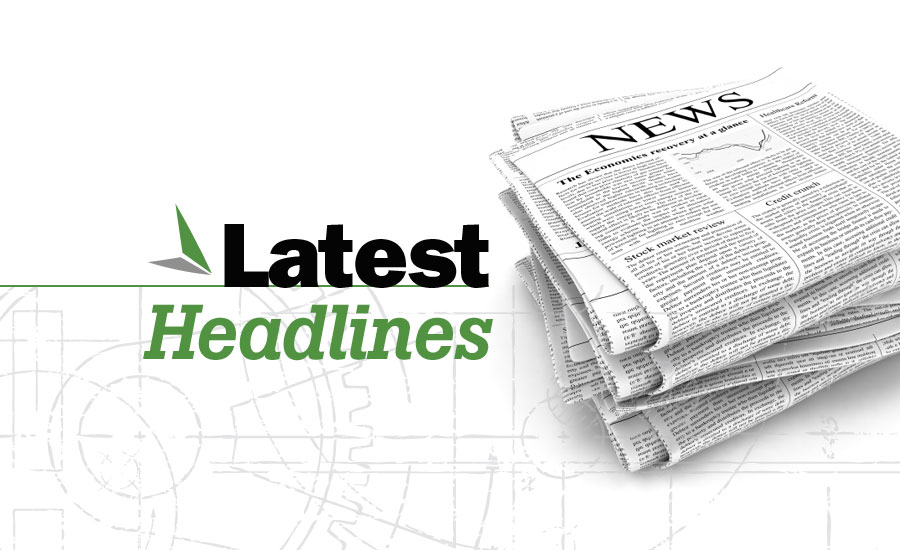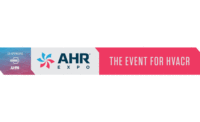According to a recent AHR Expo and ASHRAE Journal survey sent to more than 1,400 HVACR manufacturers worldwide there is growing optimism for improving economic prospects in 2017. Based on survey results, 86% of the respondents expect sales to grow in the coming year.
“It is always interesting to see how trends across the exhibitor landscape continue to shift,” says Clay Stevens, president of International Exposition Co., which puts on the annual AHR Expo event, which this year takes place Jan. 30-Feb. 1 in Las Vegas.
“We’re pleased to note the increase in responses around anticipated business growth, as well as an increase in good and excellent outlook responses regarding a majority of the HVACR industry’s various market segments. Combining these positive predictions with the fact the 2017 AHR Expo will be the largest held in the show’s 88-year history, we are anticipating a stellar year for business activity among exhibitors and attendees.”
Business activity projections for 2017
When asked to rate prospects for business in 2017, 98% of survey participants indicated a positive outlook. Within these responses, 24% answered “excellent,” representing nearly a 10% increase from 2016. Additionally, 54% responded “good” and 20% responded “fair,” with only 2% rating prospects as “poor” for the coming year.
Additionally, 86% of survey respondents say they expect their business to increase in 2017. Of these, 27% believe their business will increase by more than 10%, indicating a 6% jump from 2016. Respondents forecasting their business growth to be between 5 and 10% in 2017 increased 5% from 2016, to a total of 38%.
Twenty-two percent of respondents indicate business growth of less than 5%, with 11% anticipating business activity to remain the same for 2017. With only 2% of respondents anticipating their business to decrease next year (compared to 8% surveyed in 2015), overall results show a notable uptick in expected sales for 2017.
In further qualifying sales performance, respondents were asked to share their comparative sales results between 2015 and 2016. Twenty-three percent of respondents indicate sales increased significantly (by more than 10%), while 34% say sales increased somewhat (up to 10%) from 2015 to 2016. With 29% indicating sales stayed about the same, an additional 11% note they decreased somewhat (by less than 10%) and 3% indicate a sales decrease of more than 10%.
Overall, when comparing these performance results to those anticipated for 2017, respondents generally seem to feel they will perform as well as if not better than they did between 2015 and 2016.
Anticipated 2017 market segment performance
Thirty-eight percent of survey participants share that maintenance and replacement applications will provide the best prospects for business in 2017, representing a 10% increase from 2016 survey results. Retrofit and renovation applications, indicated by 32% of respondents as providing the best business prospects, decreased 10% from 2016. New construction held steady at 30% in exact alignment with the response percentage from 2016’s survey.
Drilling down into anticipated opportunity across the HVACR industry’s various market segments, respondents were asked to rate their outlook for the following: residential; light commercial; heavy commercial; schools; non-school institutional; office buildings; lodging; manufacturing/industrial; hospitals/health care; restaurants/hospitality; laboratories/cleanrooms; and international markets.
The residential, light-commercial, heavy-commercial, schools, lodging and international market categories all received a greater percentage of “excellent” ratings when compared to 2016’s survey. Additionally, in comparison to 2016’s responses, the non-school institutional, manufacturing/industrial, hospitals/health-care and restaurants/hospitality markets all received a higher percentage of “good” ratings for 2017.
Overall, the light commercial market was identified as offering the most promising outlook for 2017 with 74% of respondents rating it as excellent or good. The hospitals/health-care market followed, receiving a combined total of 71% excellent and good ratings, and the heavy commercial market came in at a close third with a combined 70% of excellent and good ratings. Laboratory and cleanroom applications represented the category of least anticipated growth next year with less than half (46%) of respondents indicating either an excellent or good business outlook in its regard.
Product and technology characteristics
Respondents also were asked to weigh in on the anticipated importance of energy efficiency, indoor air quality (IAQ), maintenance, first costs, sustainability, reliability and comfort to their customers in 2017.
Reliability led in significance with 77% of respondents denoting it as “very important” to customers, reflecting similar results from survey respondents in 2016. While the previous year’s survey reflected a 10% higher (87%) response regarding reliability as “very important,” this year’s survey denotes a 10% jump in “somewhat important” responses, equating to the same number of combined respondents indicating reliability as either “very” or “somewhat” important for both 2016 and 2017. From this, it is expected manufacturers will continue to engineer product and systems solutions to deliver on improved reliability in the coming year.
Of additional significance is maintenance, first costs and energy efficiency, which received combined “very” and “somewhat” important responses of 98%, 96% and 92%, respectively. Within these categories, there is a 3% increase in those indicating first costs as “very important” when compared to the previous year’s survey results.
Indoor air quality (IAQ) followed with a combined 89% of respondents indicating this category as either “very important” (48%) or “somewhat important” (41%) to their customers in 2017. Most notably, 12% more respondents denote IAQ as “very important” for 2017 when compared to 2016 survey results. IAQ is subsequently expected to be a category of keen interest and one on which manufacturers will place an increasing emphasis around research and development in the coming year.
Sustainability and comfort, with combined “very” and “somewhat” important respective percentages of 88 and 87, round out the responses regarding factors of importance for customers in 2017. When compared to 2016 survey results, sustainability increased in overall importance (i.e. combined “very” and “somewhat” important responses) by 6%, while comfort slightly decreased in overall importance by 3%.
Innovation introductions for 2017
Similar to years past, this year’s survey results indicate continued industry growth as 61% of AHR Expo exhibitors say they plan to introduce a new product at the 2017 show in Las Vegas. Additionally, 43% of respondents share that the new products they introduce will in some way improve energy efficiency.
2017’s driving trends
Provided with the opportunity to share their thoughts in an open-ended answer to the question “What do you see as the most important trend or issue in the HVACR industry,” respondents were candid in sharing a variety of opinions. While the range and scope of answers was wide, 36% of respondents were unanimous in their belief energy efficiency remains a key focus for 2017. This reflects a similar trend in survey responses for 2016 and is anticipated to indicate further advancements across the HVACR manufacturing landscape around improved efficiency performance.
In a similar vein, several respondents indicate sustainability and emissions reduction as important areas of focus in the coming year. One respondent particularly indicated the importance of keeping efficient equipment and overall building operations running properly so that mechanical systems can operate at the optimal levels originally intended by the mechanical engineer.
Fifteen percent of open-ended responses in some way addressed the issue of connectivity, improved equipment integration and technology platform protocols, and the increasing role played by the Internet of Things (IoT) across the HVACR industry. Within these, specific remarks were made on the importance of advancing smart controls and capabilities such as occupancy-sensing/controlled mechanical systems in the coming year.
Customer concerns around first costs were indicated by 11% of respondents as a major issue for 2017 with particular responses addressing: the balance between quality and cost-effectiveness; the need for clearly defined return on investment calculations; and cautionary measures regarding cheaply produced products and parts.
An additional 9% of respondents shared their belief that recruiting the next generation of HVACR industry professionals, as well as ensuring their proper education and training will be of utmost importance as a focus for the coming year.
Recognizing the impact of the U.S. economy and political landscape on the HVACR industry at-large, 13% of respondents remarked on governmental regulations, a revitalized economy and the results of the 2016 U.S. presidential election as expected to notably affect the industry in 2017.
Further factors such as fuel costs, the reliability of the U.S. utility grid, increased application of heat recovery, VRF and ductless systems, movement from tube-and-fin to microchannel solutions and increased awareness/use of push-to-connect fittings also are mentioned as important trends for the coming year.


